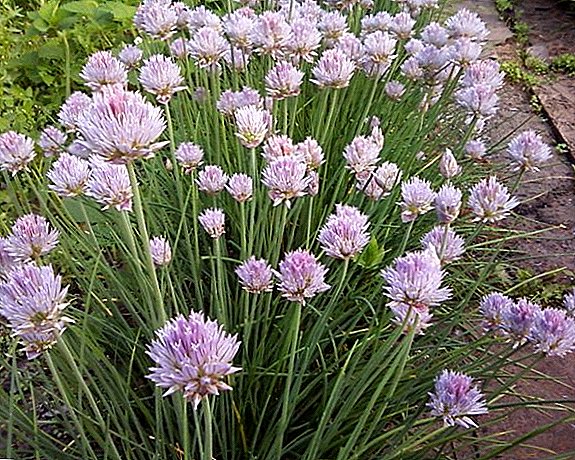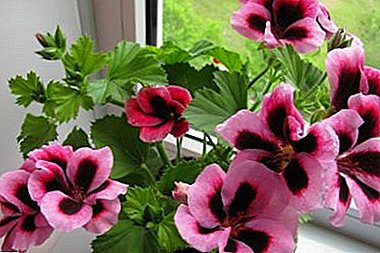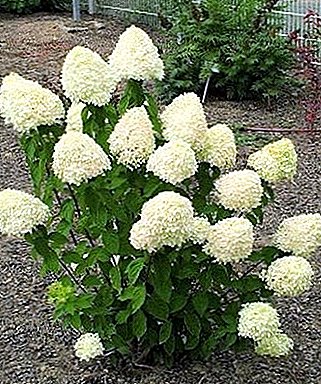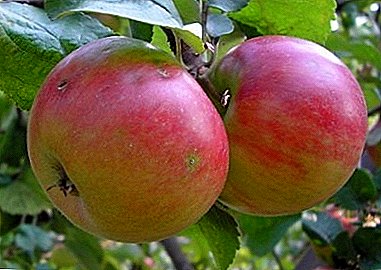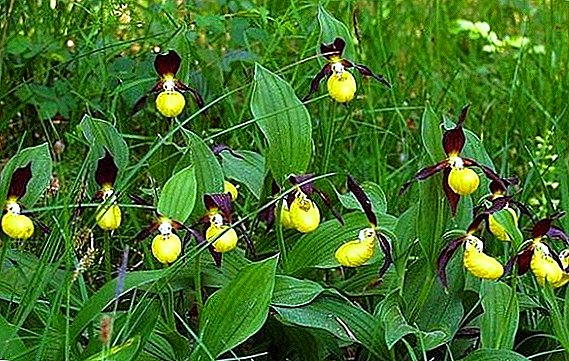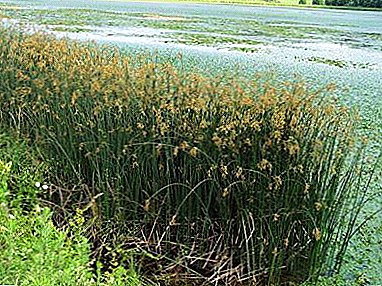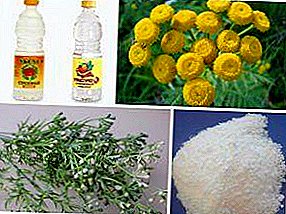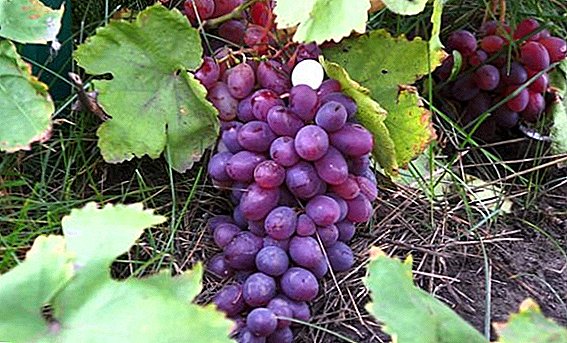 Sweet gentle grapes of the memory of the surgeon, despite the small clusters and home origin, adequately compete among the early varieties. In addition, winegrowers appreciate in him a high resistance to cold, disease and parasites. What is this variety, how to grow its vine in its own garden and what to do to collect good crops annually - we will tell about all this later in the article.
Sweet gentle grapes of the memory of the surgeon, despite the small clusters and home origin, adequately compete among the early varieties. In addition, winegrowers appreciate in him a high resistance to cold, disease and parasites. What is this variety, how to grow its vine in its own garden and what to do to collect good crops annually - we will tell about all this later in the article.
Breeding history
Table grapes "in memory of the surgeon" was obtained by crossing the varieties of "Talisman" and "Nistru." Its author is the Russian amateur breeder Yevgeny Pavlovsky, who at home managed to bring out more than fifty unique grape varieties.  But, despite their dignity, the top of the entire breeding work of the grower went exactly to the “Memory of the Surgeon”.
But, despite their dignity, the top of the entire breeding work of the grower went exactly to the “Memory of the Surgeon”.
Check out the most common grape varieties: “In Memory of Dombkovskaya”, “Buffet Party”, “Julian”, “Cabernet Sauvignon”, “Kishmish”, “Chardonnay” and “Girlish”.It is this variety that has been recognized by professionals for its high taste, frost resistance and fearlessness in front of attacks of pests, pathogens and fungi.
The only "inconvenient" feature of the species is its thermophilicity, which does not allow the vine to develop in the northern regions.
Did you know? About 2 hundred biologically active substances were found in grapes, including more than a dozen vitamins, pectins, iron, cobalt, zinc, manganese, fluorine, iodine, copper, molybdenum, organic acids, and only 65 kilocalories per 100 g of product.From the variety “Nistru” “In memory of the surgeon” inherited a delicate scarlet blush of fruits and small size, and from the “Talisman” - the ability to quickly adapt to new conditions and early maturity.
Description and distinctive characteristics
The grapes in the memory of the surgeon appreciate early maturity, ease of care, improved taste and high immunity, as is evident from the description of the variety, photos and consumer reviews.  The bush stands out in the vineyard with strong, vigorous, vigorous, easily rooted and rapidly growing vine. The first inflorescences on the plant appear in early June. It is characteristic that there are bisexual flowers in the tassels.
The bush stands out in the vineyard with strong, vigorous, vigorous, easily rooted and rapidly growing vine. The first inflorescences on the plant appear in early June. It is characteristic that there are bisexual flowers in the tassels.
When pollination of them ripen round berries of medium size. Each weighs about 8-15 g. They look very appetizing. Top covered with not thick white skin with a blurry scarlet blush.
In sunny areas, berries often get rich pink coloring. Inside the juicy fleshy flesh with medium density and a pleasant sweet taste with a light acidity.  It has subtle notes of strawberry and tea rose. In total, the fruits consist of 22 percent of sugars, and the acidity was found 8 g / l.
It has subtle notes of strawberry and tea rose. In total, the fruits consist of 22 percent of sugars, and the acidity was found 8 g / l.
Eating does not feel the skin and tissue fibers. Berries form cylindrical clusters that weigh about half a kilogram.
Important! To stimulate the intensive fruiting of the grapes in the memory of the surgeon, it is necessary to remove a vine for 6–8 buds annually. Ideally, each bush should have no more than 35 of them.Variety differs brown sprouts, which are dark purple nodes. The foliage is medium in size, dark green, three-fingered. The yield of the Surgeon’s Memory does not break records, on average, one cluster is formed on one fruitful sprout. But this nuance is compensated by high commodity, immune and cold-resistant qualities. Mature plants can easily survive 20-degree frosts, they are not sensitive to pathogens mildew, oidium and various rot.
Features of growing
Prospects for the development of the vine are largely determined by the quality of planting material, competent rooting and care. What prefers a variety of "memory of the surgeon," try to understand the details.
Lighting
The vine of any vine loves heat and a lot of light. Fruiting of crops and quality of berries depend on these major factors.  Therefore, winegrowers are trying to place seedlings on sun-drenched areas, preferably away from drafts, northerly winds and lowlands, where cold air settles.
Therefore, winegrowers are trying to place seedlings on sun-drenched areas, preferably away from drafts, northerly winds and lowlands, where cold air settles.
Did you know? In Ukraine, people eat very little grapes. Despite the fact that the annual rate of consumption of berries for each resident of the country is within 8-10 kilograms, in practice this figure barely reaches 1 kilogram.It is better to equip the vineyard so that neighboring buildings and trees do not cast a shadow on it, because in such conditions the taste characteristics of berries, as well as their number, will significantly deteriorate.
Moreover, botanists note that with good illumination, the foliage of the plants produces much more carbohydrates, the fruits are filled with sugar content and a pleasant aroma.
We recommend to get acquainted with the varieties of table white grapes for your garden: "Valentine", "Kesha", "Augustine", "Laura", "Bazhena", "Monarch", "Harold", "Arcadia", "Timur", "Talisman" .The clusters become saturated amber-purple hue. Such specimens have a thickened skin and longevity of the wood.
Soil requirements
For the good development of the vine, it is important to plant the plant on a light, nutritious soil, which has a high permeability.
Enriched chernozem substrates are ideal for vineyards. Ideally, they should be slightly acidic or neutral pH.  You can check this factor with regular table vinegar. A couple of drops enough to splash on a handful of soil, taken from a 20-centimeter depth.
You can check this factor with regular table vinegar. A couple of drops enough to splash on a handful of soil, taken from a 20-centimeter depth.
Hiss and small bubbles denote an alkaline environment, their absence is acidic. Experienced gardeners adjust limestone soil, dolomite flour or cement dust.
Sometimes it is difficult to determine the percentage of sand and clay in the ground on the plot chosen for laying the vineyard. But this must be done, as the prevailing sand and clay impurities have a bad effect on the nutritional processes of the rhizome.
Important! Heavy loams as well as silt substrates are not recommended for vineyards. They practically do not allow moisture and make it difficult for the root processes to absorb nutrients. And on the sands, the water evaporates quickly, and the roots are very cold in winter.In order to find out the main components of the soil mixture planned for grapes, fill it with a third glass. Top with water and stir well.
 Place the container on a flat surface and let it stand. At the end of the experiment, analyze the sediment, which you will see at the bottom:
Place the container on a flat surface and let it stand. At the end of the experiment, analyze the sediment, which you will see at the bottom:- If over 70 percent of the poured land is settled, the substrate is sandy, and it will need to be diluted with black earth.
- If about 80 percent of the sediment is sand, silt or clay, the land is problematic and is not highly recommended for laying the vineyard.
- If more than a third of the upper layer of sediment consists of clay or sludge, the plot requires a chernozem correction, since it is clayey loam.
- The sand is always lowered first, silt and clay are layered behind it. It is acceptable that up to 45% of sand, 35% of silt and 20% of clay be in the vineyard.
 The better the soil is plowed, the easier it is for the roots to get food from the depths. To improve the chemical composition of the substrate can be humus, compost and mineral complex fertilizers.
The better the soil is plowed, the easier it is for the roots to get food from the depths. To improve the chemical composition of the substrate can be humus, compost and mineral complex fertilizers.Important! To contain the intensive development of the tops of the vine, it is enough to pinch it at the level of the 8th node.
Rules of planting grapes "in memory of the surgeon"
Further vegetation and fruiting of the “Surgeon’s memory” variety of grapes are closely related not only to the choice of proper lighting and type of substrate, but also to the timing, rooting methods and quality of planting material. Delve into the details.
Selection of seedlings
The main rule that experienced gardeners use when buying grape seedlings is to prefer healthy and viable material.  For quality varietal samples should go to specialized garden centers, and not to the market.
For quality varietal samples should go to specialized garden centers, and not to the market.
When choosing pay attention to the root system, the state of the vine, its age. Ask sellers what you are up to: a sapling is grown on its own roots or grafted.
It will be useful for you to learn how to plant grapes saplings in spring and autumn.You need to buy copies with strong and well-developed solid roots. They should not be dry, covered with mold, rot, stains, galls or other suspicious formations, mechanical damage.
 If you make a small scratch at the end of the root, you will notice fresh green wood, the material is worth buying.
If you make a small scratch at the end of the root, you will notice fresh green wood, the material is worth buying.Graft hybrids choose with a vine up to 45 cm and half a meter in length. Be careful, each seedling, regardless of the origin and type of the root system, must have at least a single shoot over 10 cm long.
Did you know? In the world of vineyards planted more than 80 thousand square meters of land. Of these, about 75% are used for the production of wine beverages, 27% for eating raw berries, and only 2% for preparing raisins.
Timing
Under the conditions of temperate climatic latitudes, it is customary to plant plants in the spring, when the earth warms up, and in the fall, when it was not cold.
The optimal timing for grapes "memory of the surgeon," many experts believe the middle of April. During the period of the warm season, the hybrid will have time to develop the rhizome and adapt to the winter.  Other gardeners insist on the effectiveness of autumn planting and recommend their implementation in the second decade of September.
Other gardeners insist on the effectiveness of autumn planting and recommend their implementation in the second decade of September.
They explain their position by reduced risks of nematodes and fungal parasitic mycelium, which often affect the rhizome. In addition, during the hibernation season, the plant will harden and in spring it will vigorously grow.
In many ways, they are right, and others. Therefore, the timing of planting choose, based on the climatic features of your region and personal benefits. The main thing is that during the rooting period the earth should not be cold, watch out for its moisture and temperature conditions outside.
Landing pattern
Before planting the acquired seedlings, it is important to prepare the site and the roots of the plant. If rooting occurs in the spring, all the preparatory work in the vineyard begins in the fall.  To do this, it is necessary to carry out deep plowing and feeding of soil, and if necessary, adjusting its acidity. In the spring, this cannot be done categorically, since dry lumps and voids are formed in the deep layers, the soil will not have time to cope.
To do this, it is necessary to carry out deep plowing and feeding of soil, and if necessary, adjusting its acidity. In the spring, this cannot be done categorically, since dry lumps and voids are formed in the deep layers, the soil will not have time to cope.
Did you know? The largest vineyards (11,750 km²) are Spain. The second place is occupied by France (8640 km²), and the third - Italy (8270 km²).After preparing the ground, you need to dig a hole with dimensions 50 x 50 cm. Lay a drainage layer on the bottom. Top completely covered with fertile substrate, which is prepared from equal parts of the shovels removed by the first bayonets when digging the deepening of the soil, horse manure, compost.
 Some add a bit of granular superphosphate to feed. Then the hole is covered with a dark plastic film and left until spring.
Some add a bit of granular superphosphate to feed. Then the hole is covered with a dark plastic film and left until spring.In the case of spring planting, all the above operations are carried out a month before rooting.
The preparation of a sapling plays an important role, because the development of culture during the first five-year plan depends on its life potential.
Consequently, it is possible to contribute to quick and painless rooting by scrupulously re-examining the root processes, checking their freshness and processing with growth stimulants (“Humat”, “Emistim C”, “Kornevin”). If rotten, dried or moldy areas were found, they are cut off to the living. At the end, the root system is dipped into a clay mash.
When everything is ready, take cover from the hole and re-do the recess. The roots in the pit gently straighten, fall asleep soil and ram it. It is important that when planting a seedling 2 of its lower eyes peaked above the ground. On top of them, it is desirable to pour a small mound.
And on grafted samples leave the place of vaccination. When laying the vineyard between neighboring plants observe distance within one and a half meters. In order not to stray and facilitate calculations, make a marking with a cord and a peg.
Important! After planting, grape saplings need to be watered and mulched again. This is done to retain moisture, prevent weeds and quickly rooting the vine.
Grade Care
Variety "In memory of the surgeon" is different thermophilic and unpretentious. But this does not mean that the vine can only be satisfied with an abundance of sunlight and good soil. To obtain a quality crop the gardener needs to make an effort. 
Watering
Excessive moisture should beware. Therefore, know the sense of proportion and never turn the area under the grapes into a swamp. Abundant and frequent watering plants are needed during the initial phases of the growing season before the appearance of inflorescences.
In the future, renew water procedures is only under conditions of prolonged drought. The amount of water that grape bushes need depends on the location of the groundwater and the age of the vine.  For example, young saplings need frequent, but small portions of moisture, and mature plants rarely require, but a lot of water. Some winegrowers spade outlines a shallow ditch on the border pristvolnyh circles. This reduces the risk of water stagnation.
For example, young saplings need frequent, but small portions of moisture, and mature plants rarely require, but a lot of water. Some winegrowers spade outlines a shallow ditch on the border pristvolnyh circles. This reduces the risk of water stagnation.
Important! Fresh manure can not be made under the grapes. It is inhabited by many parasitic insects that spoil the roots.
Fertilizer
Every spring, before the development of buds, it is necessary to fertilize the grape bushes with organic or mineral complex substances. Repeated procedure takes place a month before flowering, before ripening and after harvesting.
Agronomists do not recommend to dwell on the same complex fertilizers, because the grapes constantly, depending on the vegetation phase, require new nutrients.  For example, the active buildup of green mass contributes to nitrogen, so the urea and ammonium nitrate contribute exclusively at the beginning of the development of the vine. Phosphorus contained in superphosphate is responsible for the quality of inflorescences and future berries. In late August and early September, the bush is fed with potassium, and the fertilizer season ends with zinc, which affects the frost resistance of the plant.
For example, the active buildup of green mass contributes to nitrogen, so the urea and ammonium nitrate contribute exclusively at the beginning of the development of the vine. Phosphorus contained in superphosphate is responsible for the quality of inflorescences and future berries. In late August and early September, the bush is fed with potassium, and the fertilizer season ends with zinc, which affects the frost resistance of the plant.
Pruning
Cutting vines are arranged in the spring before the buds begin to open, or in the fall, when the plant goes into hibernation. But the last option is dangerous, because wounded wood becomes very vulnerable to low temperatures.  On the "memory of the surgeon" pruning is carried out using the fan method. First of all, we stock up with a sharp inventory, which before work should be disinfected with a weak solution of potassium permanganate.
On the "memory of the surgeon" pruning is carried out using the fan method. First of all, we stock up with a sharp inventory, which before work should be disinfected with a weak solution of potassium permanganate.
Familiarize yourself with the rules for pruning grapes from unnecessary shoots in the summer, autumn and spring.Then make slanting sections after the 6th or 8th node. On one bush there should not be more than 22 sprouts and 35 knots.
Did you know? Since ancient times, anemia, gout, hypertension, gastritis, constipation, hemorrhoids, tuberculosis, asthma, diseases of the liver, gall bladder, and kidneys have been treated with grapes. Berries were also used to improve metabolic processes in the body and calm the nervous system.
Spraying against pests and diseases
Although the variety has high levels of resistance to pathogens and parasites, prevention does not hurt. To this end, many process bushes with boron mixture or fungicides.  During the season it is enough to hold no more than 3 sprays. Effective drugs are Topaz, Antrakol, Chorus, Tiovit.
During the season it is enough to hold no more than 3 sprays. Effective drugs are Topaz, Antrakol, Chorus, Tiovit.
It is also important to take measures against bothersome wasps, which, sensing the imminent ripening of sweet berries, fly from the whole region. Fighting them will take a lot of time and requires patience.
Some growers constantly monitor wasp nests, burning them. Others simply protect the clusters with dense nets through which the fruits become inaccessible to pests.
Features wintering varieties
In the botanical description of the variety indicates its fitness for low temperatures, but in a review, many gardeners talk about excessive performance. According to consumers, the variety “The memory of the surgeon” is very fond of heat and can withstand no more than 19 degrees of frost.  Therefore, regardless of the severity of winter, all young plants need shelter. To do this, their root system is warmed with a layer of humus, and the vine is removed from the support, remove about 75 percent of the shoots and hide them under spunbond or sacking. Spudding up with snow, slate.
Therefore, regardless of the severity of winter, all young plants need shelter. To do this, their root system is warmed with a layer of humus, and the vine is removed from the support, remove about 75 percent of the shoots and hide them under spunbond or sacking. Spudding up with snow, slate.
Important! Grafted seedlings of the memory of the surgeon are very poorly taken root, give little fruit, often get sick and hibernate worse.
Advantages and disadvantages
When you learned about the main requirements of the hybrid in planting and care, its features of development and fruiting, it is time to draw a line under the key advantages and disadvantages of the variety.  Among the positive qualities of grapes, gardeners call:
Among the positive qualities of grapes, gardeners call:
- early ripening (after 115 days you can feast on ripe berries);
- good adaptation to new conditions and painless rooting;
- high taste and product characteristics of the variety;
- excellent transportability of ripe grapes;
- ease of care.
Ideal plants in nature do not exist, so these minor defects of the variety can be easily eliminated by competent cultivation of the vineyard. We hope our article will help you in creating an effective, productive garden.


